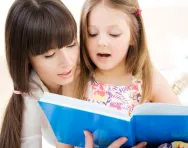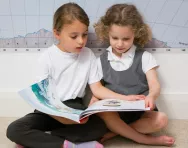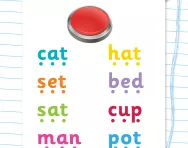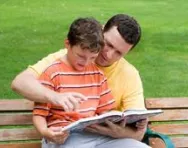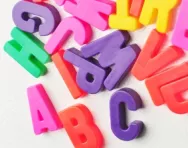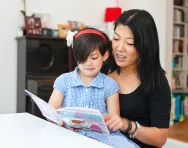Could speech rhythm training help your child learn to read?
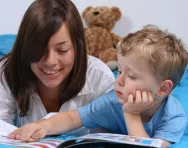


Start a unique learning programme!
- Weekly programme for each school year
- Worksheets sent direct to your inbox
- Keeps your child's learning on track
In the Early Years and KS1 classrooms, the main method of teaching children to read is via structured, synthetic phonics, where children learn the sounds that letters and groups of letters make, and apply these rules to read and spell words. But to access this phonics teaching with confidence, new research has shown that children also need an understanding of ‘speech rhythm’. Introducing an awareness of these rhythms even before they’re formally learning to read could speed up their progress when they do move on to phonics and then on to reading books with fluency.
What is speech rhythm training?
Speaking is a lot like music in that it has its own rhythm, pattern and flow. In any sentence, certain words are stressed (known as ‘strong words’, including nouns, verbs, adjectives and adverbs) while the other words – typically connecting words like prepositions, conjunctions and pronouns – are almost skimmed over. In the following sentence, for example, most of us would naturally stress the words in bold:
‘That was a disgusting way to behave.’
Other factors such as speed and intonation also play a part in the rhythm of language.
As adults, we intuitively apply speech rhythms to our speech and to the texts we read. But for young children who are getting ready to read, this doesn’t necessarily come naturally.
Speech rhythm training helps children learn about the patterns of language, which can have knock-on benefits for their reading. ‘It offers opportunities for hearing and copying patterns in our language, including stress, intonation and timing, using a fun bank of activities,’ explains Gill Budgell, educational consultant and author of the Lift-Off books from Rising Stars Reading Planet.
Speech rhythm activities don’t just use the voice. ‘Some activity ideas use instruments or sounds rather than the voice, and these are effective too,’ Gill says. For example, your child’s teacher might clap out the rhythm of a phrase like ‘happy birthday’ and get the children to clap it back to them.
How speech rhythm training could help your child’s reading
New research from Coventry University shows that if they’re used daily or even weekly over the course of a term, speech rhythm activities can help young children prepare for learning to read, and struggling readers to overcome some of their obstacles.
The research involved two groups: Reception children who were just beginning to read, and Year 3 children who were finding reading difficult. Both groups made significantly better progress with their reading than children who didn’t take part in the activities.
Speech rhythm training is particularly helpful when it’s introduced before phonics. ‘The activities help children to become “phonics ready” and smooth the way into phonics teaching,’ Gill explains. ‘The research has helped us to understand what children already need to have experienced or mastered in order to make phonics more likely to succeed. Then when they get going with phonics, reading begins to take off.’
How is speech rhythm training used in schools?
Because the research into the benefits of speech rhythm training is so new, it hasn’t yet been formally integrated into the teaching of literacy in the Early Years. ‘Teachers will almost certainly be doing some of the suggested speech rhythm activities with early years learners, especially if they’re teaching the Letters and Sounds phonics programme,’ Gill explains.
In Phase 1 of Letters and Sounds, for example, teachers focus on developing children’s speaking and listening skills. Children might take part in activities such as clapping out the syllables in words, playing instruments alongside a story and comparing sounds made by different instruments and sound makers (such as long/short and loud/quiet).
However, speech rhythm training may not be a regular activity in the classroom. ‘Teachers probably won’t be focusing on the three key elements of stress, intonation and timing, and they may not be doing it regularly or in a timetabled way so that everyone has equal access,’ says Gill. ‘They may be rushing on to teach formal phonics too quickly before children have had enough practice of speech rhythm.’
To help tackle these gaps, Rising Stars launched a programme of 204 reading scheme books, Reading Planet, informed by our growing understanding into the benefits of speech rhythm training. ‘There are 12 wordless books, linking to different aspects of sound – such as environmental sounds, instrumental sounds, rhythm and rhyme – that are designed to encourage children to be aware of and tune into these sounds,’ Gill explains. ‘The cover notes flag speech rhythm activities for each book that are simple enough for children to become confident in completing and repeating them. Little and often is key.’
Dyslexia and speech rhythm training
Children with dyslexia often find it difficult to hear speech rhythm and timing and musical rhythms. These timing difficulties could explain why dyslexic children struggle with processing letters and words' sound structure (phonology). Although more research is needed, listening to and creating music and poetry could help dyslexic children to improve their rhythmic abilities.
Helping your child develop speech rhythm awareness
Even if speech rhythm training isn’t formally taught at your child’s school, you can help them develop an understanding of the patterns of speech and build the foundations for learning to read. Typically speech rhythm activities include:
- Read a book title, clap it, then ask your child to copy the rhythm.
- Lift a sound from a book, such as a monster roar or doorbell. Make the sound and ask your child to copy it exactly with the same rhythm, timing and intonation. The ‘nee-nah’ of a police siren is a good place to start.
- Find a word in a story, such as ‘rainbow.’ Say it as either two words (rain, bow) or as one word (rainbow). Can your child hear whether you’re saying one word or two?
- Say a phrase like it is a statement and then say it like a question, for example: ‘Go to the shops!’ and ‘ Go to the shops?’ Can you child hear which one is telling and which one is asking?
- Find two words or phrases in a book. Say each using ‘dee-dees’ or ‘la-las’ rather than the words. Can you child hear which word or phrase you are saying? Try it first with something simple like, ‘Am I saying “hello” or “happy birthday”?’
- Get your child to test you as well as responding to you.

Give your child a headstart
- FREE articles & expert information
- FREE resources & activities
- FREE homework help










